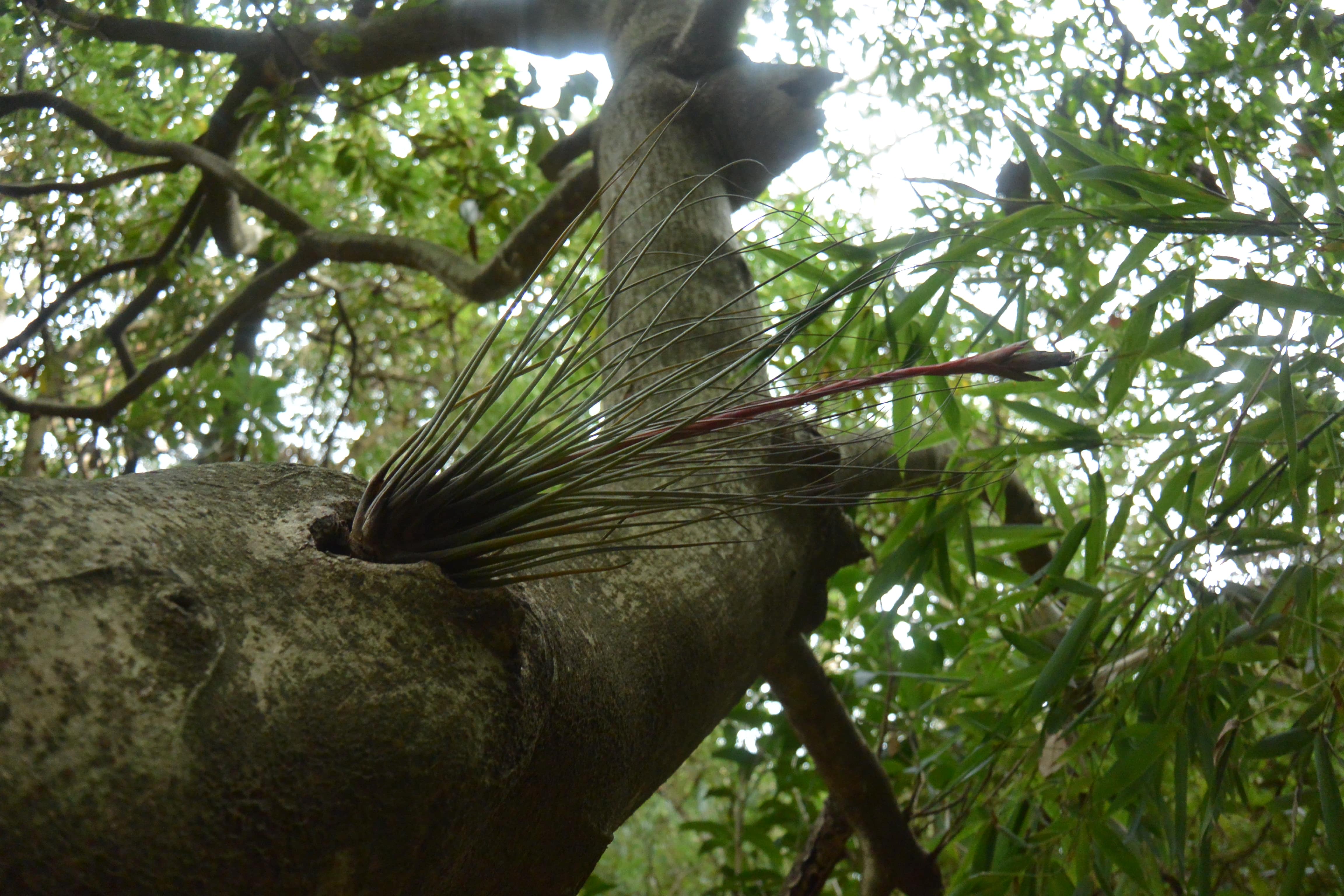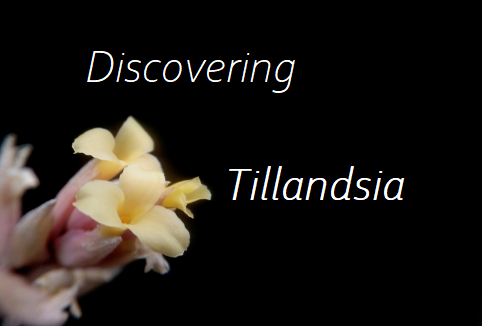
Tillandsia, also known as Air Plant, is a genus of plants, with more than 600 species, belonging to the Bromeliaceae family.
They are native to the American continent, found from the southern United States to Argentina growing in jungles and humid tropical forests to deserts and dry forests.
They grow as epiphytes, on top of trees, shrubs or other plants... There are also saxicola or rupicolous species, growing on rocks, cliffs or even in the sand of the desert or on cables or rooftops urban areas. All epiphytic plants use only other plants as support, without taking nutritional advantage of their hosts, that is what the differences from parasites.
We could say that the most surprising thing about Tillandsias is that they can grow in the air, without soil, simply tied to a bark or suspended from a wire.
Tillandsias produce roots that only serve as anchors to different surfaces, be they bark, rocks, etc., holding on tightly. Food is captured through the leaves, thanks to a structure called trichome, a whitish hair that covers its leaves, and which, throughout evolution, is a super effective system for capturing nutrients and water in the environment. . Thanks to this system, many of them can grow in places where there is practically no rain. These "hairs" are capable of absorbing and hydrating the plant with the little humidity that is created in the dew or mist at night in the deserts, making many of them can grow in extreme habitats, where practically only Tillandsias are found.
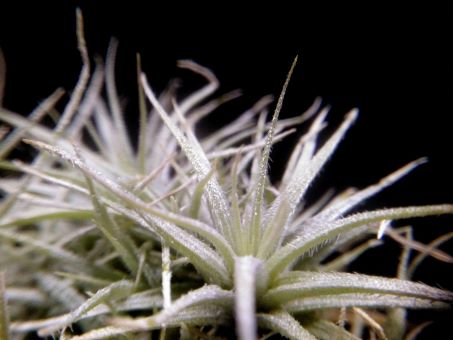
These trichomes give a white or silver color to the plant and can be an indication of the needs in the crop. The whiter the plant, the higher the concentration of trichomes, and the greater the capacity to absorb the little humidity that there is. On the contrary, the greener the plant, the less concentration of trichomes, therefore it gives us to know that it is a species that grows in humid or rainy places. Also these trichomes protect the plant from solar radiation, and can tell us which ones tolerate the sun more and which ones are more like shade. In general terms, we could divide them into two groups; Gray or White Tillandsias and Green Tillandsias. As a general rule, those white Tillandsias will be able to last longer without water and tolerate the sun and those that are greener will need more watering or humidity and will be more shady. Within this great division there is a whole range of species with its many peculiarities.
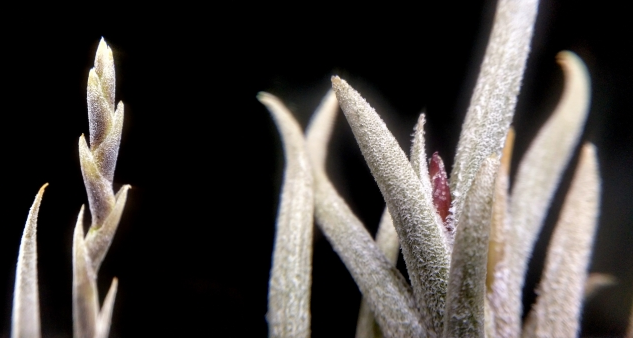
Thanks to their nutrient uptake system and their rusticity, Tillandsias, in general, are very easy-care plants, with few needs. On the other hand, their low demand makes them very slow growing plants. Tillandsias reproduce from pups (asexual) and / or seeds (sexual).
Once the plant has flowered, the mother plant will produce pups from the base. Some plants produce pups before and after flowering. Others can even make pups in the flower bracts (viviparous). They can produce one, two, three or even more offspring. Some species are more profitable than others. After flowering and the production of pups, the mother plant gives all its energy to the new plants and little by little it wears out to finally die. These pups will produce more pups, and so on continuously, eventually forming large groups of plants.
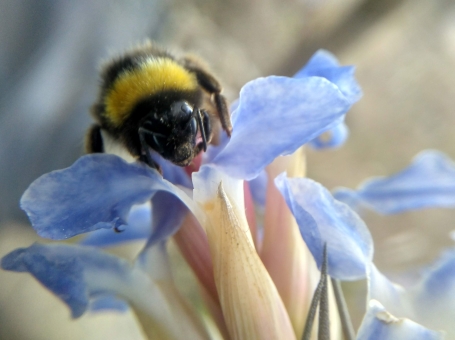
On the sexual side, its flowers in nature are pollinated by butterflies, hummingbirds or other insects. Some species are self-pollinated, such as many species of the subgenus Diaphoranthema. Other species only reproduce by seeds, without producing pups, as is the case with Tillandsia utriculata or Tillandsia orstediana. Once pollinated, they produce elongated pods, their fruits. These pods are formed, and it may take more than a year for some species to mature. Once the pods have matured they will have released the seeds. The seeds consist of some filaments that serve as a parachute to transport themselves thanks to the wind. Also some animals can transport them, like birds. Once the seed is deposited in a suitable place, the seed begins to germinate and form as a plant. Many species can take more than 20 years to reach their adult state, from gemination to flowering, that is, they are very slow processes. That is why many species are in danger in nature, due to the degradation of habitats, usually due to uncontrolled urbanization.
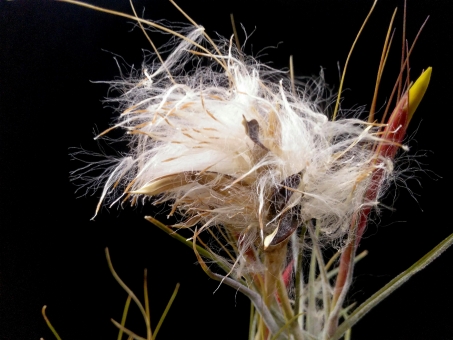
To give them good care, it is good to place them or imagine them in the habitat where they grow. Normally growing at a reasonable height in the trees, exposed to good ventilation, a filtered sun between the leaves of a tree, or many species on the rocks, exposed on cliffs in full sun or very airied.
Therefore light and ventilation are very important factors in its growth.

